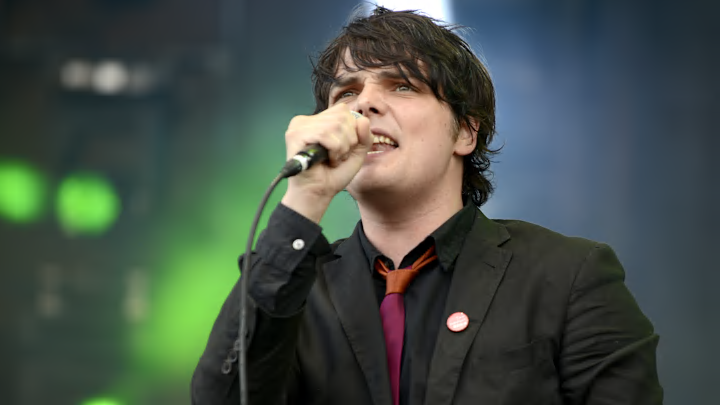When people think of emo, it's hard not to picture My Chemical Romance. Their aesthetics, lyrics, and theatrical performances helped define a struggling generation who turned to music to make sense of their feelings.
While both Three Cheers for Sweet Revenge and The Black Parade are cornerstones of the genre, only one truly captured the essence of the emo movement. And that album, undoubtedly, is Three Cheers for Sweet Revenge.
Released in 2004, Three Cheers came at the perfect time. The early 2000s saw a surge in alternative music that balanced melody with emotional vulnerability. What made Three Cheers stand out was how raw and aggressive it felt, while still deeply melodic.
The emo era was defined by the My Chemical Romance classic
Songs like "I'm Not Okay (I Promise)" and "Helena" didn’t just express pain, they screamed it in a way that felt real. The album’s fusion of post-hardcore grit and pop-punk hooks hit a nerve with a young audience who wanted authenticity.
Raw emotion in every riff
Compared to The Black Parade, which was released in 2006, Three Cheers feels less calculated. The Black Parade was undeniably ambitious, styled like a rock opera with Queen-level theatrics and a concept that tried to reach beyond emo. It was about death, legacy, and big-picture themes.
While that made it musically rich, it also distanced the band from the core of what emo meant to many fans. Emo wasn’t about grand statements but the smaller, personal struggles you couldn’t explain to anyone else.
Three Cheers for Sweet Revenge captured that feeling in every note. The production was tight but not over-polished. The guitar riffs were gritty, and Gerard Way’s vocals cracked and strained in ways that made it feel like he was living the songs.
There was something intimate about the messiness of it all. Even the concept behind the album, a Bonnie-and-Clyde-style revenge fantasy, was dark and theatrical, but it never got in the way of the raw emotional weight behind the music.
Lyrics that spoke for a generation
Lyrically, Three Cheers struck the emo nerve better than anything else in the band’s catalog, feeling more like diary entries than lyrics. It was the kind of stuff kids could quote on their MySpace pages and feel seen. That emotional accessibility gave the album staying power far beyond its chart performance or critical reviews.
This is not to say The Black Parade wasn’t important; it absolutely was. It brought MCR to a wider audience and showed what the genre could become when pushed to its limits.
But when you strip it all back, emo was never about perfection or mass appeal. It was about being messy, misunderstood, and loud about it. And Three Cheers for Sweet Revenge nailed that like no other album ever did.
Three Cheers was the soundtrack to black eyeliner, studded belts, and late-night AIM messages. It was the raw, bleeding heart of a movement. And for that reason, it remains the definitive emo record of its time.
